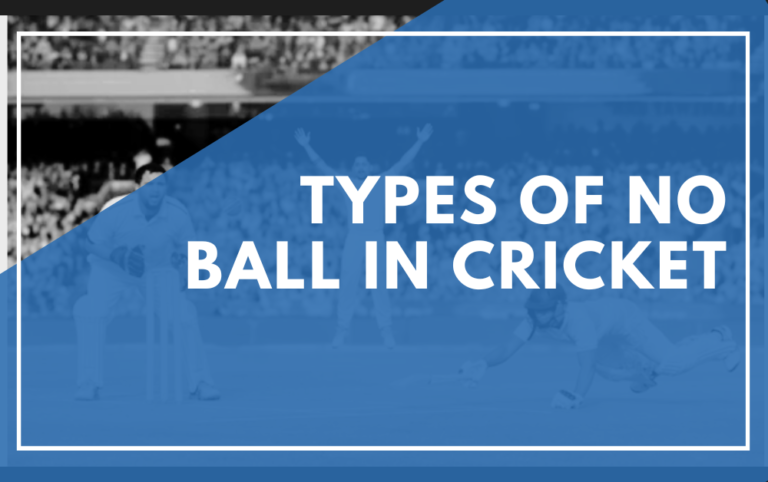Wide Ball in Cricket – Understanding This Complex Rule
Demystifying the intricacies of judging wides in the game
The wide ball is one of the most complex rules in cricket to understand and adjudicate correctly. Subtle variations in interpretation frequently infuriate fans during matches. This in-depth guide explains everything about the wide ball law – from what constitutes a wide to how they are signalled and their impact. Read on for a full appreciation of this contentious cricketing regulation.
What is a Wide Ball in Cricket?
A wide ball in cricket is a delivery by the bowler that is judged by the umpire as traveling too far from the batter to strike. Wides result in an extra run awarded as penalty to the batting side, and the ball must be bowled again.
The essential principles of a wide are:
- The ball passes outside the batter’s reach sufficiently that they cannot play a ‘normal cricket hit’ at it with the bat.
- The ball finishes wide of the popping crease without touching the batter or any part of their equipment.
- The batter is standing still in a ‘normal guard position’ and makes no movement to hit the ball.
So in simple terms, if the bowler delivers too far from the batter for them to reach it with a regular cricket shot, it should be called wide.
Why are Wide Bowls Penalized in Cricket?
Wides are called and penalized because a delivery too far from the batter is considered unfair and against the spirit of the contest between bat and ball in cricket.
Reasons for penalizing wide Bowls include:
- Forces the batter to ‘chase’ the ball outside their hitting zone, risking edges and miss-hits.
- Prevents the batter striking the ball into gaps due to its wide angle.
- Encourages negative, defensive play by making it hard to score runs.
- Allows bowlers to ‘spear’ Bowls well wide of off stump without repercussions.
So wides aim to keep deliveries targetting the stumps to promote attacking batting and high scoring matches. Bowlers must not exploit the width of the pitch excessively.
How Does an Umpire Call and Signal a Wide?
Umpires follow a clear procedure to call and signal wides:
- The umpire watches the path of the ball after the bowler releases it.
- If the ball passes clearly outside the batter’s reach, the umpire calls ‘wide’ loudly when the ball reaches the batter’s end wicket.
- The umpire stretches both arms out horizontally to signal a wide was bowled.
- The umpire alerts the scorers that an extra run is awarded for the wide.
- The bowler must re-bowl that delivery, usually from behind the popping crease.
So umpires try to judge quickly whether the line will be wide and signal instantly so play can resume. Close calls require sharp decision-making.
What Impact Does a Wide Ball Have in Cricket?
Wide deliveries lead to the following repercussions:
- The batting side is awarded one run credited as ‘extras’. Further wides in the over also score an extra run each.
- The ball is ruled inactive after the wide call, so no dismissals (bowled, caught, stumped etc) off a wide count.
- In limited overs matches, the next ball after a wide is designated a ‘free hit’.
- Consistent wides may force the captain to change the bowler’s end or take them off altogether.
So wides give free runs to the opponent and reduce a bowler’s precision. Judging wides accurately is essential for match fairness.
How are Wides Interpreted Differently in ODI and Test Cricket?
There are subtle variations in how strictly wides are adjudicated between ODIs/T20s versus test matches:
- In limited overs cricket, wide interpretation is very strict due to fielding restrictions and free hits. Marginal calls often go with the batter.
- Tests allow slightly more leeway on interpreting wides, particularly on the off side outside a right-hander’s reach. Borderline decisions may favor the bowler.
- ODIs permit close wides down the leg side that pass the batter’s leg stump. Same bowls in tests may be called straight deliveries.
- Additional wide lines are sometimes marked in ODI/T20 games to assist precise wide calls off spinners. Tests do not use wide lines.
So while the law is the same, application varies. Limited overs demand strict policing to keep bowling fair during fielding restrictions. Tests offer marginally more latitude.
What are the Key Factors in Judging a Wide Delivery?
When judging if a ball is a wide, umpires consider:
- How far the ball passes from the striker’s body and normal batting reach.
- Whether the batter had to move or stretch unreasonably to make contact.
- If the ball would have missed the stumps by a safe margin.
- Where the ball pitched – wide deliveries often land significantly outside off stump.
- Any movement or head turns by the batter before the ball passes them.
- The inherent variation of the bowler’s delivery style – off spinners release from wider than fast bowlers.
- Marked guideline lines indicating off side wide margins.
So there are many visual clues for an umpire to process instantly when ruling on a wide call. Their consistency shapes matches.
What are the Major ‘Gray Areas’ in Judging Wides?
Despite clear wide guidelines, umpires must make difficult judgment calls in these gray situations:
- When a batter moves across their stumps before a leg side wide passes.
- Deliveries barely missing the leg stump down the leg side.
- Off break bowlers extracting big turn to beat the batter.
- Deviating deliveries like swinging or seaming bowls.
- Off side bowls just beyond a right hander’s normal reach.
- Wide yorker length deliveries the batter tries to dig out.
These ambiguous wide calls test the umpire’s interpretation and reflexes. Teams argue most wide decisions come from this subjective gray area.
Why are Some Wides Controversial Decisions?
Wide calls sometimes infuriate teams and fans because:
- Interpretation varies between umpires – what seems wide to one seems fair to another.
- Marginal calls are a matter of centimeters – human error is expected.
- Ball trackers and replays show wides that actually clip the stumps.
- Batters try to move inside the line of leg side wides at the last moment.
- Bowlers argue they are changing angles wider on the crease legally.
- Consistency between overs – some overs are called very tight, others given latitude.
So while wides protect batters from unfair deliveries, they remain controversial decisions due to constant subjectivity and marginal line calls influenced by human reactions.
Famous Wide Ball Controversies in Cricket History
Like any law relying on interpretation, debatable wide calls have decided many major games:
- The 2019 ODI World Cup Final – England were awarded 6 extra runs from a deflected overthrow after a controversial wide. This was the defining moment of England’s victory.
- Australia vs England, 3rd Ashes Test 2019 – Several wides were called against off-spinner Lyon for bowls drifting down the leg side. Australia felt this was too harsh.
- West Indies vs Australia, Antigua Test 2003 – Australia’s last wicket pair clung on for a draw, aided by extremely strict wide calls by the umpires to protect tailenders.
These examples show why wide decisions evoke such emotion. Teams feel unjustly treated when 50-50 calls consistently go against them.
Unraveling the Wide Ball: 10 Intriguing Questions
- Wide by Definition: What exactly constitutes a wide ball? The Laws of Cricket offer a precise definition: a delivery not within reach for the batsman to play with a normal cricket shot, either from their current position or their normal batting stance.
- Beyond the Lines: Wide bowls aren’t just judged by sight; they’re guided by white lines marking the batsman’s reach. But there’s more! Umpires also consider the batsman’s movement and stance, ensuring even the most athletic attempts to reach the ball don’t negate a wide call.
- From Penalty to Profit: The consequence of a wide? A freebie for the batsman! They score one run automatically, regardless of contact with the ball. This seemingly small reward can have a monumental impact, shifting momentum and even deciding the fate of a match.
- Wide and Wronged? Judging wides is an art, not a science. Umpires, under immense pressure and scrutiny, sometimes face agonizing decisions. Was the ball just out of reach, or could the batsman have stretched for it? These judgment calls spark lively debate, adding another layer of intrigue to the game.
- Widely Misunderstood? Don’t underestimate the psychological impact of a wide ball. Bowlers, striving for precision, can be deflated by a wide call, while batsmen, gifted a free run, gain a crucial boost of confidence. These subtle swings in emotion can shape the course of an entire innings.
- A Tale of Two Formats: The rulebook defines a wide differently for different formats. In Test cricket, it’s 200 runs behind that triggers the follow-on, while in limited-overs formats, the threshold drops to 150 or even 100 runs. This adaptability ensures the rule remains relevant across the diverse spectrum of cricket.
- Wide and Historical: The wide ball has been a part of cricket since its earliest days. Records from the 18th century mention wides being penalized, highlighting their enduring presence in the game’s rich tapestry.
- Technology Takes the Field: In recent years, technology has stepped in to aid umpires in judging wides. Ball-tracking systems provide precise data on the ball’s trajectory, minimizing human error and sparking renewed discussion about the role of technology in officiating.
- Wide-Ranging Strategies: Bowlers, ever the tacticians, use the wide ball strategically. A planned wide delivered just before a yorker can disrupt the batsman’s rhythm, while a well-disguised wide late in the over can steal precious runs.
- The Future of the Wide: As cricket evolves, will the wide ball remain a relevant rule? Should the definition adapt further to shorter formats? These questions keep the debate alive, ensuring the wide ball retains its place as a captivating element of the gentleman’s game.
Remember These Key Points:
- The wide ball is defined by its inaccessibility to the batsman for a normal cricket Shot.
- Wide bowls award the batsman one run and can significantly impact the game’s momentum.
- Judging wides is subjective, leading to debate and adding drama to the game.
- The wide ball rule differs between formats, ensuring its adaptability.
- Technology plays a growing role in judging wides, sparking discussions about its impact.
- Bowlers use the wide ball strategically to disrupt the batsman’s rhythm.
- The future of the wide ball remains an open question, highlighting its ongoing relevance in cricket.
So, the next time you witness a wide ball soaring past the batsman, don’t dismiss it as a mere error. See it as a microcosm of cricket’s inherent unpredictability, a catalyst for drama, and a testament to the game’s enduring ability to surprise and enthrall. Remember, even the smallest delivery can leave the biggest mark in the world
Conclusion – A Difficult Art Requiring Sharp Judgments
Judging wides is one of the toughest skills for cricket officials. Bowls pass rapidly, angles deceive, and batters move unpredictably. Yet applying the wide law fairly is integral to preventing unfair bowling. Teams and fans will continue debating borderline calls passionately. But respecting umpires’ integrity while embracing technology assistance is the best path to enhancing wide decisions.
Overall, the wide ball pits batter, bowler and umpire in a constant battle of wits and reflexes. At its best, this contest between bowling skill and judging acumen makes for captivating cricket.

Live Cricket Stream: Smartcric is promoted as a go-to platform for live cricket streams, offering access to matches through channels like Willow HD and Star Sports HD. The website emphasizes its role in providing live coverage to a global audience, enhancing accessibility to cricket matches.







